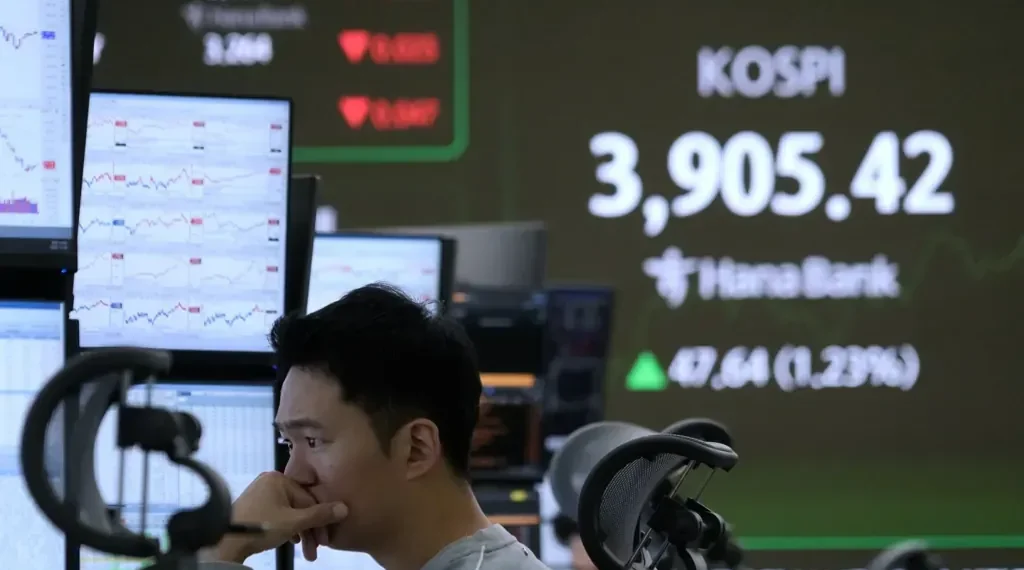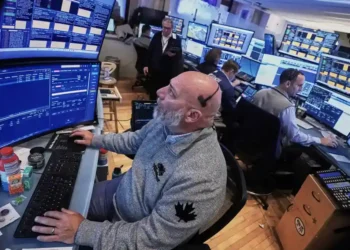U.S. stocks climbed on Wednesday, marking a fourth consecutive day of gains and extending a rebound that has eased the market’s earlier pullback. Major indexes closed broadly higher, supported by strong performances in technology shares and optimism that the Federal Reserve could cut interest rates again before the end of the year.
The S&P 500 advanced 0.7%, while the Dow Jones Industrial Average also rose 0.7%. The Nasdaq composite gained 0.8%, helped by renewed appetite for large-cap tech stocks. Trading volumes were moderate as investors adjusted positions ahead of the Thanksgiving holiday, with markets closing on Thursday and operating on shortened hours Friday.
Most sectors within the S&P 500 finished in positive territory, and gainers outpaced decliners by more than two to one on the New York Stock Exchange. Analysts described the session as a continuation of a broader recovery from earlier losses that followed a rapid sell-off at the start of the month.
“This has been a buy-the-bounce response after a very swift retreat,” said Sam Stovall, chief investment strategist at CFRA. “Investors appear increasingly convinced the pullback has run its course and could set up a stronger finish heading into December.”
Tech Stocks Lead Wall Street Winning Streak
The latest upswing was driven largely by technology companies, which have been central to market momentum throughout the year. Dell Technologies surged 5.8% after reporting record orders for its artificial intelligence servers, reversing earlier declines triggered by concerns that valuations had risen too quickly during the recent AI-driven rally. Nvidia, currently the most valuable company in the U.S. stock market, added 1.4%.
Microsoft gained 1.8%, while semiconductor and software supplier Broadcom climbed 3.3%, reflecting continued demand for companies tied to cloud infrastructure and advanced computing. Several major tech stocks have seen heightened volatility this year as investors weigh strong long-term growth potential against concerns about elevated pricing.
Financial stocks also contributed to Wednesday’s gains. Robinhood Markets jumped 10.9% after announcing plans to launch a futures and derivatives exchange in 2025, expanding beyond its core trading platform. The company’s move reflects a broader trend among retail-focused brokerages seeking to diversify revenue amid fluctuating equity volumes.
In the consumer sector, Urban Outfitters joined a group of retailers posting stronger-than-expected quarterly earnings, sending its shares up 13.5%. The company’s results added to recent signs that consumer spending remains uneven but resilient in certain categories despite mixed economic data.
Petco rose 14.5% after raising its full-year earnings forecast, a notable shift following weaker performance earlier in the year. The company reported mixed quarterly results but said improvements in cost efficiency and product strategy supported its revised outlook.
On the downside, agricultural machinery manufacturer Deere fell 5.7% after issuing a lower forecast tied in part to tariff pressures. The company cited weaker equipment demand and uncertainty in global trade conditions, adding to concerns in industrial and farm-related sectors.
Market Outlook Shaped by Rate Expectations
The latest rise in U.S. stocks comes as traders increase bets that the Federal Reserve could reduce interest rates for a third time this year at its December meeting. Data from the CME Group shows investors pricing in a nearly 83% probability of another cut, reflecting expectations that policymakers may act to cushion a slowing labor market.
The central bank has already lowered rates twice in 2024 as it aims to balance cooling inflation with weakening employment indicators. U.S. inflation has remained above the Fed’s 2% target, complicating decisions on how quickly borrowing costs should be eased.
Cutting rates may help support economic growth by reducing financing costs for businesses and households, but policymakers have warned that premature or aggressive adjustments could fuel price pressures. Federal Reserve officials have issued mixed signals in recent weeks, emphasizing that decisions will depend on incoming data rather than preset timelines.
The bond market offered a similarly cautious picture. The yield on the 10-year Treasury slipped to 3.99%, suggesting increased demand for longer-term government debt. Meanwhile, the two-year yield edged higher to 3.48%, reflecting short-term expectations of policy movement. The narrowing gap between the two benchmarks remains closely watched as an indicator of future economic conditions.
Economic Data Sends Mixed Signals
Recent economic reports have painted a varied picture of U.S. consumer behavior and overall growth. Retail sales data released this week showed Americans spent less in September than analysts expected, raising questions about household confidence heading into the final quarter of the year. Separate surveys also suggested rising anxiety among consumers about economic stability.
Some reporting delays have complicated the outlook, with government data releases temporarily suspended during the recent federal shutdown. Economists note that the lag in official indicators has made it harder for markets and policymakers to assess real-time conditions.
Corporate earnings, however, have generally remained solid, with many S&P 500 companies exceeding forecasts. Analysts say that while revenue growth has slowed compared with previous quarters, profit margins have held up better than feared, partly due to cost-cutting measures and productivity gains in sectors including technology and financial services.
Despite the positive trend, market strategists caution that volatility could return if economic data weakens further or if rate expectations shift sharply. Seasonal patterns have historically supported equities toward the end of the year, but global risks—including geopolitical tensions and slower international growth—remain factors for investors.
Global Markets Move Higher Alongside Wall Street
U.S. gains were mirrored across major international markets. In Europe, Germany’s DAX rose 1.1%, while France’s CAC 40 added 0.9%. Analysts attributed the rise to improved sentiment following Wall Street’s rebound and expectations that central banks across advanced economies may be nearing the end of their tightening cycles.
In Asia, Japan’s Nikkei 225 climbed 1.9% in a broad rally that lifted major exporters and technology firms. The index has been bolstered in recent months by a weaker yen, which has supported overseas earnings for multinational manufacturers. Regional markets across Asia also benefited from easing bond yields and stronger demand for semiconductor-linked companies.
As the U.S. trading week winds down, attention is expected to shift toward upcoming economic indicators, including employment data and revised inflation metrics. For now, investors appear encouraged by the latest run of gains, though whether Wall Street’s winning streak can extend into December may depend on clearer signals from the Federal Reserve and sustained corporate performance.
This article was rewritten by JournosNews.com based on verified reporting from trusted sources. The content has been independently reviewed, fact-checked, and edited for accuracy, neutrality, tone, and global readability in accordance with Google News and AdSense standards.
All opinions, quotes, or statements from contributors, experts, or sourced organizations do not necessarily reflect the views of JournosNews.com. JournosNews.com maintains full editorial independence from any external funders, sponsors, or organizations.
Stay informed with JournosNews.com — your trusted source for verified global reporting and in-depth analysis. Follow us on Google News, BlueSky, and X for real-time updates.











